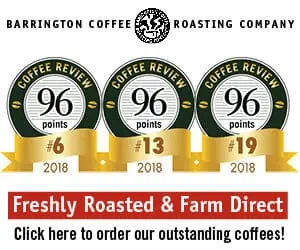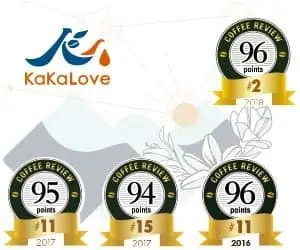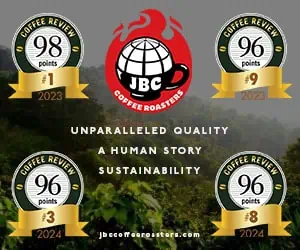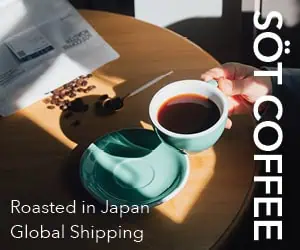Soft and sweet? Or bland and flat? Balanced versus boring? Subtle versus inconsequential? Imagine similar sets of adjectives, and you have the delicate inner struggle that characterized this month’s cupping of current-crop coffees from Panama.
Panama is a rising star, an up-and-coming contender, among Central America coffee origins. All premium Panama coffees are produced on large family-owned farms in Chiriqui Province in the western part of the country, near the border with Costa Rica. At least five growing regions are clustered around Baru volcano: Boquete (the best known), Paso Ancho, Volcan, Piedra de Candela, and Renacimiento. The elevations are impressive (3,600 to 5,200 feet, 1,100 to 1,600 meters), the soil volcanic, the wet processing state-of-the-art. Although some traditional typica and bourbon varieties are grown, most Panama specialty coffee appears to come from caturra (a 20th century selection) and the respected hybrid catuai. In terms of varietal correctness, this range of cultivars makes Panama somewhat less correct than very traditional origins like Ethiopia, whose coffees come almost entirely from older cultivars, but more so than origins which are heavily invested in controversial hybrids with robusta in their makeup.
One of the impressive characteristics of the Panama specialty coffee growers is their willingness to cooperate in pursuit of quality. For the past three years the Specialty Coffee Association of Panama has held a cupping competition in which the members’ best coffees are judged by an international panel of cup-testers.
The coffees in this month’s cupping represent ten of the top eleven finalists from this year’s Specialty Coffee Association of Panama cupping competition. Coffees that come before the Coffee Review panel are always pre-selected in one way or another, either by the coffee growers themselves or by the coffee dealers who submit the samples to the Review. But this set of coffees has been subject to a particularly rigorous and formally organized selection. The Coffee Review panel was privileged to cup the best of the best of this year’s Panamas.
The rigor of the selection is undoubtedly reflected in the impressive average rating of 83.5 attracted by these coffees. On the other hand, no individual sample provoked quite the enthusiasm that the very best samples from Guatemala, Ethiopia, and Kenya did in past cuppings.
The reason, I think, resides in the question I started with: Soft and sweet or bland and flat? Balanced or boring? For every panelist who was willing to enthuse about the bright yet sweet, buttery smooth, balanced cup of the best of these Panamas, another was looking for something with more fireworks: bigger acidity, more provocative grace notes, more fruit, more flowers.
How closely did the preferences of our group of experts match the preferences of the group assembled by the Specialty Coffee Association of Panama for its Cupping Event? Here are the rankings of the two panels. Tie scores for Coffee Review ratings were broken on the basis of supporting statistics. Coffee Review CuppingPanama Cupping Event1 La Berlina Estate1 La Berlina Estate2 Los Alpes Estate2 Boquete Premium Regional 3 El Tucan Estate3 Las Victorias Estate4 Las Victorias Estate4 Panamaria Boquete5 Don Bosco Estate5 El Tucan Estate6 Bajo Mono Estate6 Los Alpes Estate7 Boquete Premium Regional7 Boutet Estate8 La Torcaza Estate8 Bajo Mono Estate9 Boutet Estate9 La Torcaza Estate10 Panamaria Boquete10 Don Bosco Estate
Given differences in context (cupping in a group versus cupping in isolation) and inevitable variations in individual palates and preferences, the two sets of results match up reasonably well. The most striking discrepancy is the difference in ranking for the Panamaria Boquete, which came in fourth in the Panama Event but dead last in the Coffee Review cupping. I ranked this very impressive coffee fourth despite a slight hint of bitter ferment that appeared as the cup cooled. However, four of nine Coffee Review panelists reported the same defect as rather severe in their samples, which dramatically depressed its overall rating. This may be one of those frustrating instances in coffee evaluation in which a small number of defective beans appears in one set of samples (those that reached the Coffee Review) but not in another.
What can the consumer take away from this report? That the best Panama coffees are bright but sweet, relatively full-bodied, smoothly balanced and supply textured. I found myself consistently impressed by the way sweetness enveloped and rounded the acidity in these coffees, but disappointed by the relative absence of the little floral twists or fruity turns that distinguish the profiles of the finest Guatemala and East Africa coffees.










